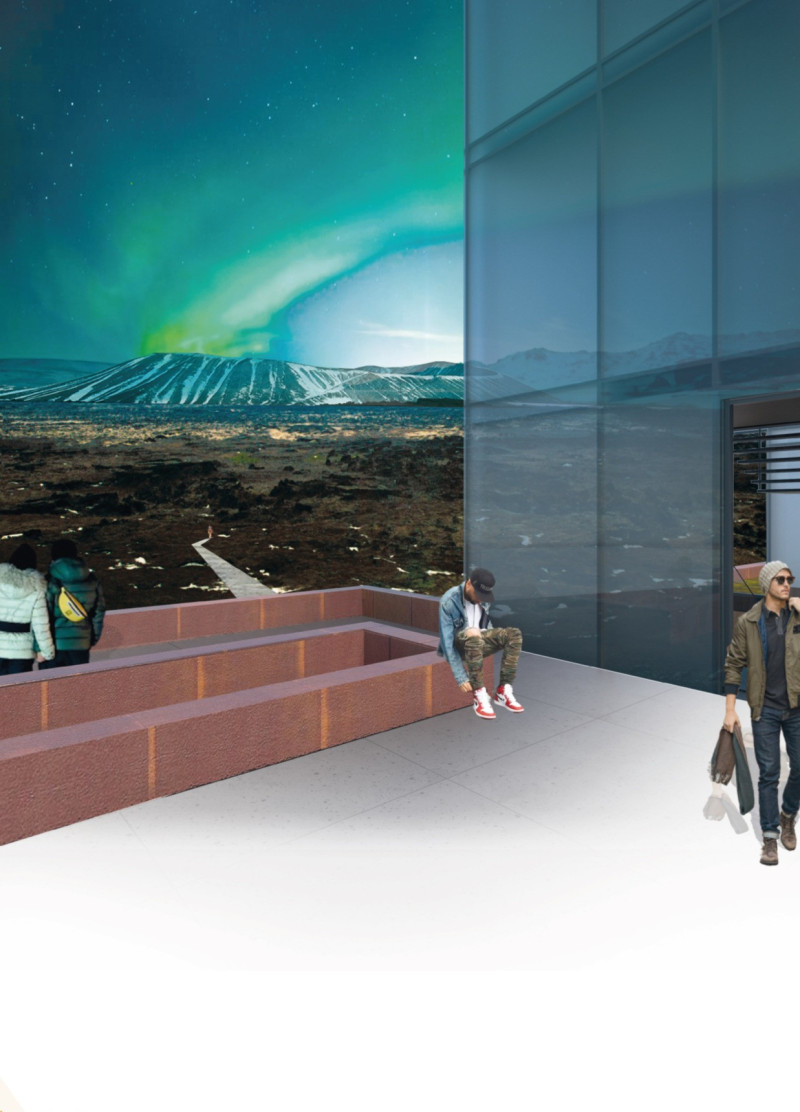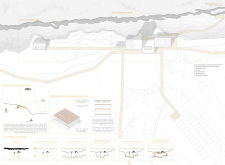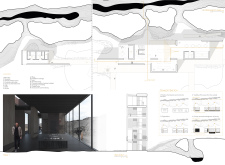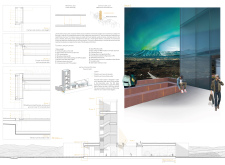5 key facts about this project
The Iceland Cave Tower is located in a unique geological area in Iceland, marked by the rift created by two tectonic plates. This distinctive setting serves as an important backdrop for a design that aims to enhance visitor interaction with the region's thermal caves. The design concept focuses on blending architecture with the natural surroundings, encouraging exploration while respecting the delicate environment.
Concept and Design Integration
The design emphasizes a connection between the architecture and the landscape. A network of pedestrian pathways guides visitors through key areas, allowing them to engage with the thermal caves and surrounding nature. This approach promotes movement and exploration, offering individuals a close-up experience of Iceland's geological features. The layout is carefully planned to ensure accessibility, making it easy for visitors to navigate and enjoy the site.
Functional Elements
Key components of the design include a reception building with an observation tower that serves as the main entry point. This structure helps orient visitors while providing views of the impressive geological formations in the area. An observation deck is thoughtfully placed within the layout to allow guests to appreciate the landscape from different perspectives. Additionally, parking and intervention areas have been integrated to support visitor access, ensuring minimal disruption to the natural landscape.
Sustainability Practices
Sustainability is a significant focus of the design, reflected in both material choices and environmental management techniques. Wood panels made from recycled materials are utilized, aiming to reduce environmental impact and highlight ecological awareness. Extensive green roofs and efficient drainage systems are incorporated, further emphasizing the commitment to sustainability and the preservation of the area’s natural resources.
Water Resource Management
The design also features a double water system that reduces stress on the local aquifer. This system captures rainwater for use in the building and filters gray water for irrigation. Such measures demonstrate an understanding of water conservation, ensuring that the building meets visitor needs while promoting ecological balance.
The observation deck provides clear views across the landscape, framed by the natural edges of the rift, allowing visitors to connect with the geological heritage of Iceland.






















































